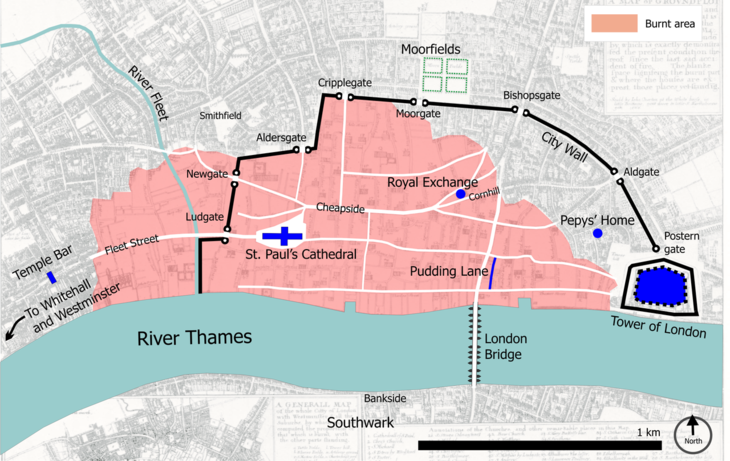
One afternoon in the Londonist office we were flicking through a gallery of 'West End' photos and found ourselves asking each other:
"Is this actually in the West End?"... "No?"
"Is this in the West End?"... "Yes, at a stretch."
"What about this street?"... "Well..."
Which got us thinking, where exactly is the West End? What constitutes the boundaries of such a colloquially used term that doesn't actually exist on a map? Where did the term actually came from, anyway?
The rather unsatisfactory answer is that no-one knows for sure when the term 'West End' was first used. But it's most likely this term for the area we now know as the West End was used as early as the late 17th century, possibly early 18th century. Prior to this, another part of London in Hampstead was known locally as West End from at least 1534.
Here's a quick history lesson to give context: London in the 17th century ran from Westminster to Stepney, and smaller dwellings lay beyond. The westerly side of London was home to the palaces of Westminster, Whitehall and St James's, and was an area supposedly favoured by the elite due to the palaces' proximity, and the fortunate upwind position which meant homes escaped the smell of smoke emitted from the bustling city.
Londoners were already beginning to migrate west due to overcrowding in the inner city, and then the Great Fire of London struck in 1666.

The intense and destructive fire ravaged most of the central city and left thousands homeless with nothing but a blackened mess to return to. More than ever, the area around the palaces became an attractive prospect to develop.
And so they did, and the area officially became the west end of London (lower case). Was it known as the West End at this time? Again, it's hard to say, but perhaps.
However, in the early 18th century, the west really came into its own as theatres started to pop up, including the Theatre Royal Haymarket (1720), and the Royal Opera House (1732). Theatreland was on the rise, though it wasn't until the 19th century that it really became the epicentre of theatrical entertainment we know today.
So, the question at hand: where is the West End, and what constitutes its boundaries?
A quick search in the Oxford Dictionary is about as helpful as stopping a stranger on the street and asking them for their opinion. The West End, it says, is 'the entertainment and shopping area of London to the west of the City'.
Okay, so there is a concentrated area of 'entertainment' and 'shopping' in the area of London we're looking into, but we need to keep investigating.
Ultimately, it appears there are two popular geographical definitions of what exactly constitutes the West End.

The first, which most people probably agree with when they think of the West End, is the one which encompasses the entirety of Theatreland (except Royal Festival Hall and the Old Vic, which are both south of the river), and its surrounding areas Soho, Covent Garden, Leicester Square, and Aldwych.
Its most northerly side runs across Oxford Street from Oxford Circus to Holborn, connecting south to Aldwych, west along the Strand to Trafalgar Square and then north again to rejoin Oxford Circus.
This is also the version of the West End that Westminster City Council supports.

The second definition comes from Londoner Ed Glinert, which includes the previous areas with the additions of Mayfair, Marylebone and Fitzrovia. Glinert outlined this definition in his historical book West End Chronicles: 300 Years of Glamour and Excess in the Heart of London.
As the West End is associated with the finer things in life, perhaps these areas should indeed be included. Or perhaps the term is more often used these days to describe Theatreland in the same way Broadway does in New York.
But what do you think? Do you agree with either theory, or have your own? And do you agree with our definition of what counts as the East End of London? Let us know in the comments.




